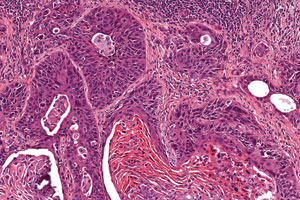Three technologies that just might save your life
Medical technology moves too fast for most of us to keep up. So we asked Associate Professor of Biomedical Engineering Christopher Wagner what technologies he sees as the new game-changers in medicine.

Medical technology moves too fast for most of us to keep up. So we asked Associate Professor of Biomedical Engineering Christopher Wagner what technologies he sees as the new game-changers in medicine. His own expertise is in tissue engineering, a field in which he has more than 14 years of experience.
1. 3-D PRINTING > Body parts—replacement bones, tissue, even organs—could one day be made using 3-D printers. With print quality rising and costs dropping, Wagner has high hopes for advanced medical applications of this technology. Some hospitals have already purchased their own 3-D printers in an effort to offer customized treatment, such as the exact replica of a patient’s heart for surgeons to practice on before the operation.” All of these technologies are really getting us to the point where we don’t look at the patient as one in a population,” says Wagner. “The patient is the population.”
 2. TISSUE ENGINEERING > Since its rise in the 1980s, research in tissue engineering has given patients in need of organ transplants a glimmer of hope. But the technology has hit a roadblock: the body’s immune system. “Our body is really good at getting rid of things that are not us,” explains Wagner. “Learning more about how to work with stem cells has been a big breakthrough.” Working with cells derived from the patient allows scientists to avoid the rejection of transplanted tissue, and Wagner says an increasing number of prototype products are emerging that promise lab-grown tissue and organs. “If we had those types of tissues available to us, that would change medicine altogether,” he says.
2. TISSUE ENGINEERING > Since its rise in the 1980s, research in tissue engineering has given patients in need of organ transplants a glimmer of hope. But the technology has hit a roadblock: the body’s immune system. “Our body is really good at getting rid of things that are not us,” explains Wagner. “Learning more about how to work with stem cells has been a big breakthrough.” Working with cells derived from the patient allows scientists to avoid the rejection of transplanted tissue, and Wagner says an increasing number of prototype products are emerging that promise lab-grown tissue and organs. “If we had those types of tissues available to us, that would change medicine altogether,” he says.
3. NANOMEDICINE > In the world of the ultra-small, a promising new field of medicine has blossomed: nanomedicine. Tiny materials like nanoparticles, a billionth of a meter in size, are being developed for cancer diagnosis and treatment, better medical imaging, and biosensing. Wagner is particularly excited about injectable nanoparticles for diabetics that sense blood-sugar levels and secrete insulin. Such technology may someday eliminate the constant monitoring and self-injections that diabetics face daily.
Posted on September 23, 2014

